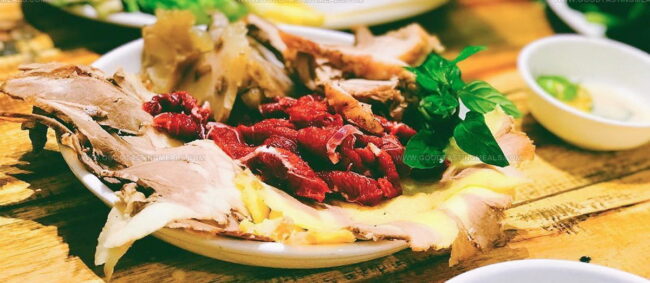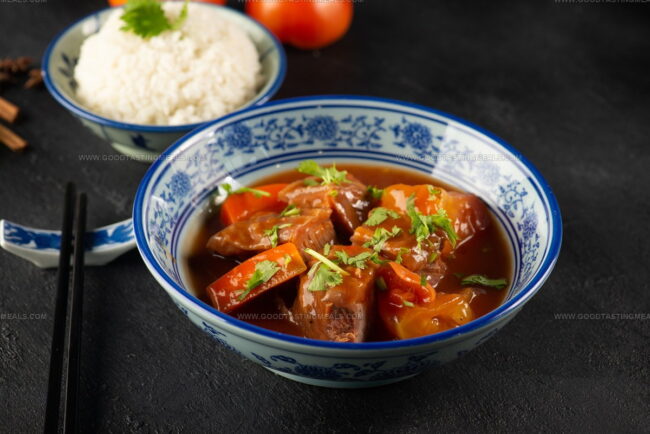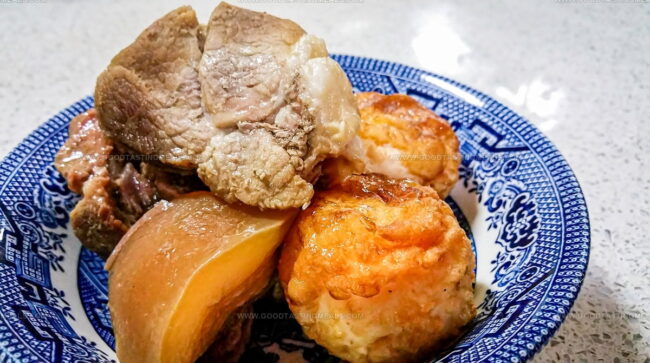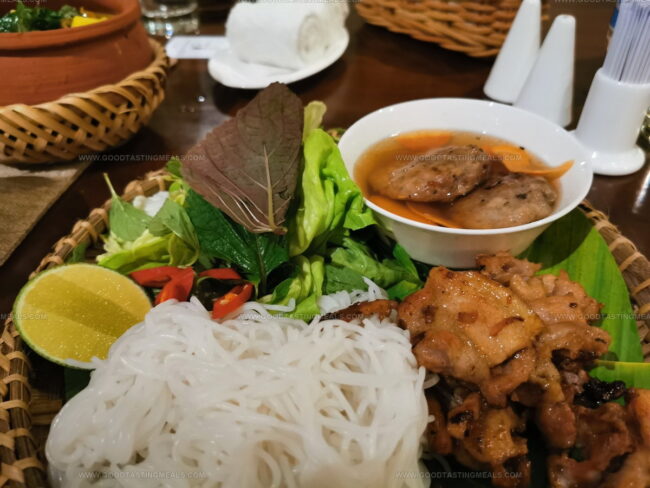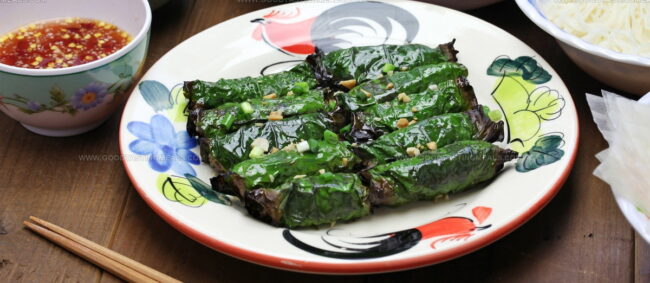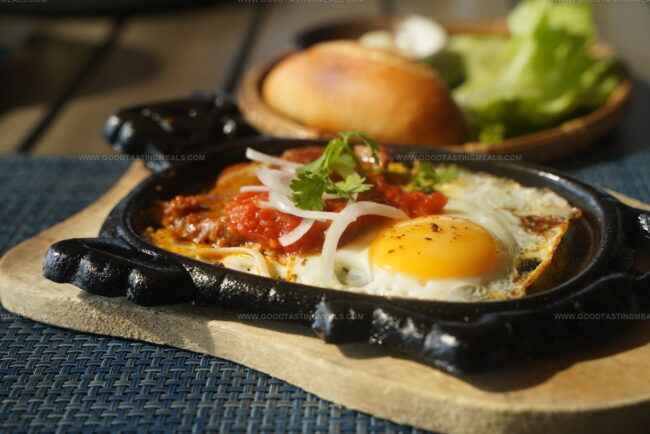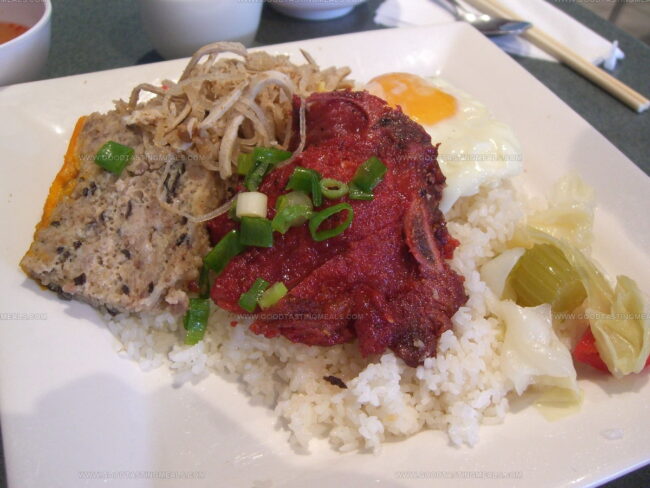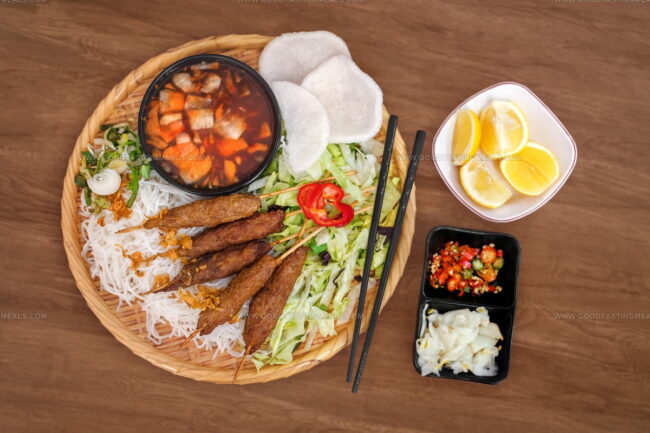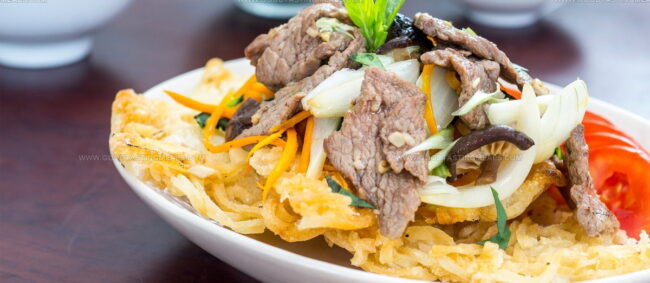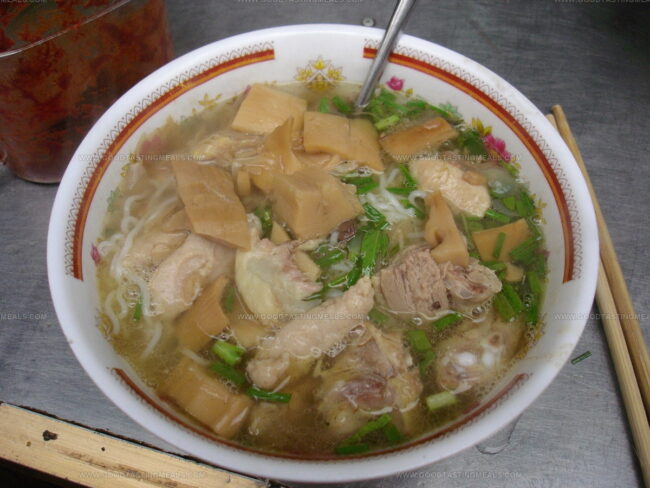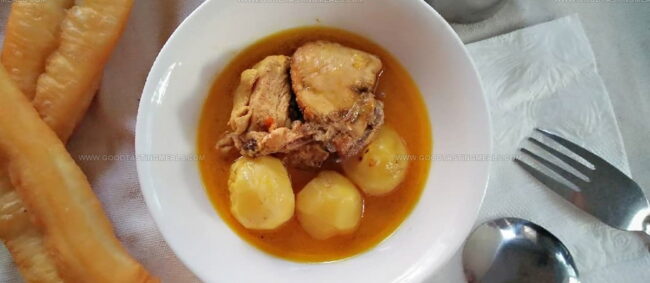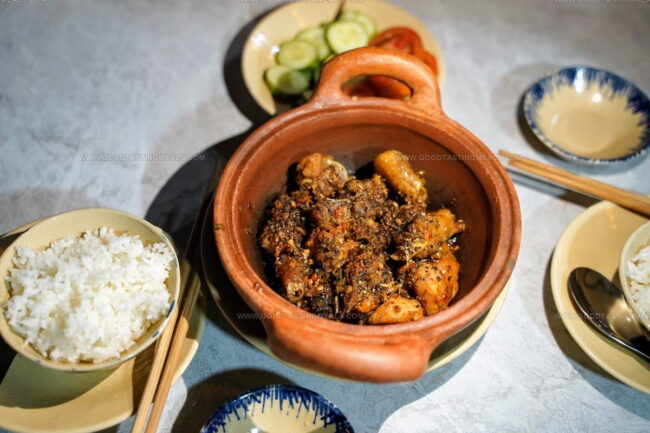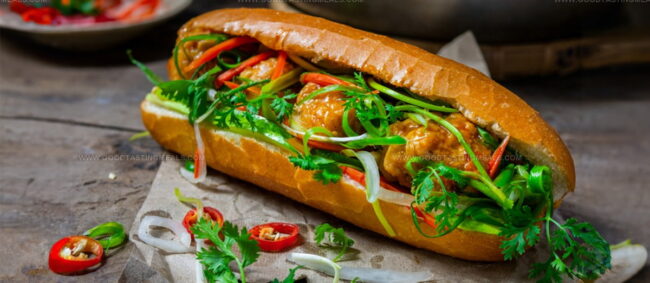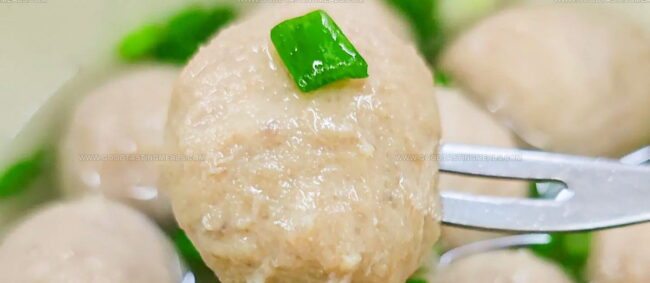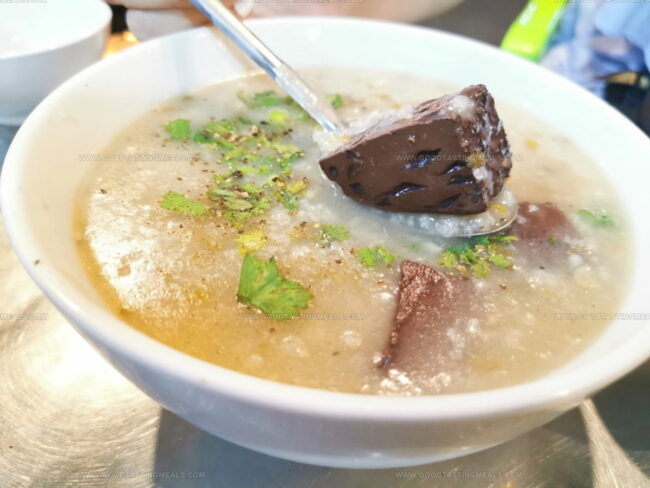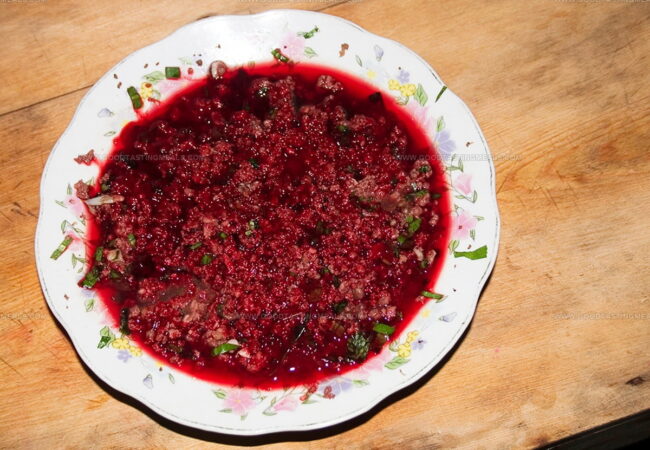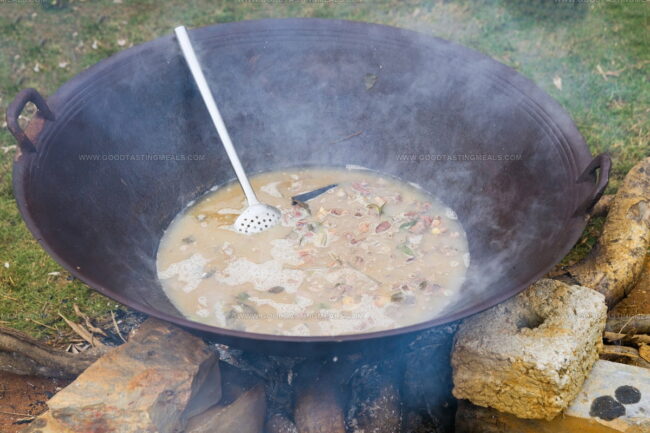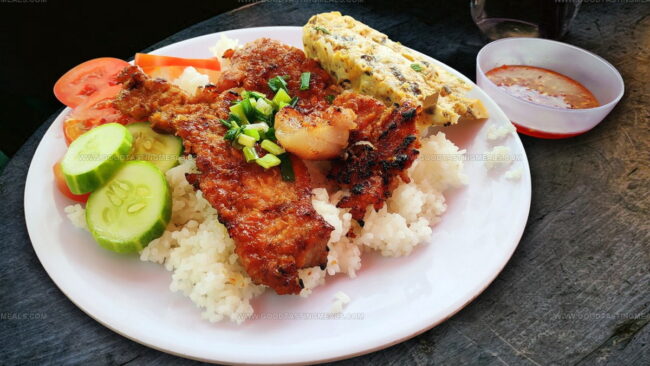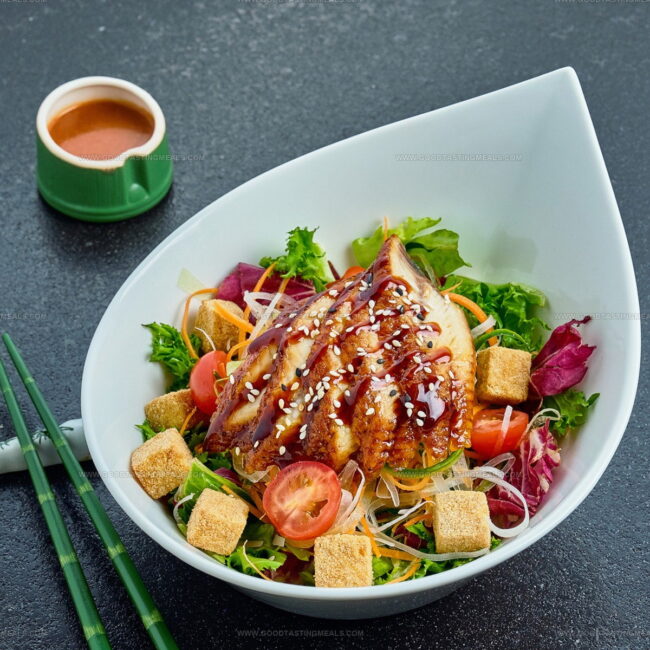33 Flavorful Traditional Vietnamese Meat Dishes to Try
Traditional Vietnamese meat dishes represent a vibrant culinary landscape where flavors dance and textures tell rich stories.
Regional ingredients and ancestral cooking techniques converge to create remarkable gastronomic experiences that tantalize taste buds.
Vietnamese cuisine blends complex spices, fresh herbs, and carefully balanced protein preparations that reflect cultural diversity and historical influences.
Meticulous preparation methods transform simple proteins into extraordinary meals that showcase remarkable depth and nuance.
Family recipes passed through generations capture essential elements of Vietnamese culinary traditions, reflecting regional variations and personal innovations.
Aromatic marinades and precise cooking techniques elevate meat from mere sustenance to a profound cultural expression.
Regional differences highlight unique characteristics of meat preparations across different geographical landscapes.
These 33 traditional Vietnamese meat dishes promise a delectable journey into authentic flavor profiles:
Traditional Vietnamese Meat Dishes with Local Flair
Vietnamese meat dishes blend fresh herbs, savory broths, and tender cuts in a parade of street food and family recipes. Each plate is vibrant, balanced, and memorable.
Beef In Vinegar Hot Pot (Bo Nhung Dam)
Bo nhung dam celebrates Vietnam's communal dining tradition through a tangy vinegar-based hot pot that transforms raw beef and seafood into a vibrant interactive meal.
Diners cook thin slices of beef, squid, or shrimp directly in the aromatic broth infused with lemongrass and coconut milk.
Rice paper wrappers become vessels for creating personalized rolls stuffed with fresh herbs like mint, basil, and perilla leaves alongside crisp vegetables such as bean sprouts and cucumbers.
Nuoc cham and mam nem dipping sauces add complex layers of flavor to each bite.
Regional variations might include different protein selections or subtle broth modifications.
Families and friends gather around the communal pot, sharing conversation and cooking their own portions.
Vietnamese restaurants and home kitchens frequently feature this engaging dish that encourages social interaction through shared cooking and eating.
Vietnamese Shaking Beef (Bo Luc Lac)
Bo luc lac delivers Vietnamese beef cubes seared quickly at high heat, creating a tender, flavorful meat dish popular in restaurant settings.
Vietnamese cooks marinate beef chunks in garlic, soy sauce, and black pepper before flash-frying them to seal in rich flavors.
Restaurant tables often feature these succulent beef pieces served atop fresh watercress with sliced tomatoes and crisp pickled onions.
Small side dishes of zesty lime-based vinaigrette complement the meat's robust taste.
Historically, bo luc lac emerged as a special occasion meal reserved for significant events and gatherings.
Modern Vietnamese restaurants now serve this dynamic dish more frequently, though it retains its celebratory reputation.
Regional variations include different marinades and accompanying vegetable selections.
Small details like precise searing techniques make bo luc lac a standout Vietnamese beef preparation.
Vietnamese Beef Stew (Bo Kho)
Bo kho signifies a hearty Vietnamese beef stew packed with rich spices and robust flavors originating from complex cultural culinary exchanges.
Vietnamese families traditionally enjoy this savory dish for breakfast, often served with warm baguettes or noodles.
Rural regions prepare bo kho with intense spiciness, contrasting urban preparations with milder taste profiles.
Tender diced beef simmers alongside carrots, lemongrass, cinnamon, and chili peppers in a deeply aromatic broth.
Garlic and shallots infuse additional depth to the stew's complex flavor landscape.
Green onions, coriander, and sliced onions provide fresh garnish and textural contrast.
Historical evidence suggests bo kho reflects both Eastern and Western culinary influences.
Small regional variations highlight Vietnam's diverse gastronomic traditions.
Vietnamese Caramelized Pork Belly (Thit Kho Tau)
Thit kho tau embodies Vietnamese comfort food through its succulent caramelized pork belly and eggs simmered in a rich, sweet-savory sauce.
Vietnamese families traditionally prepare this classic dish using tender pork belly slow-cooked with coconut water and fish sauce until deeply flavorful.
Garlic and shallots infuse the meat with aromatic depth during long braising.
Sugar creates a deep caramel color and glossy finish across the protein.
Hard-boiled eggs absorb the complex sauce, becoming golden and intensely seasoned.
Soy sauce adds umami complexity to the braising liquid.
Marinating techniques ensure maximum flavor penetration before cooking.
Pickled mustard greens or steamed rice complement this hearty main course.
Grilled Pork Meatballs With Vermicelli Noodles (Bun Cha)
Bun cha represents a signature Vietnamese street food masterpiece originating in Hanoi, featuring grilled pork meatballs swimming in a tangy broth alongside cool rice noodles and fresh herbs.
North Vietnamese culinary traditions shine through its complex flavor profile, blending smoky grilled meat with sharp dipping sauce and crisp vegetable accompaniments.
Diners combine rice noodles, charred meat, and aromatic herbs into a single harmonious bite that captures Hanoi's vibrant food culture.
Barack Obama and Anthony Bourdain famously shared this dish during a memorable television episode, propelling bun cha into international spotlight.
Restaurants throughout Vietnam serve variations of this beloved meal, though Hanoi's version remains the most authentic.
Street vendors traditionally prepare the meat over charcoal, creating a distinctive smoky essence.
Fresh herbs like perilla, lettuce, and coriander provide crisp counterpoints to rich grilled pork.
Grilled Beef Wrapped In Betel Leaf (Bo La Lot)
Bo la lot emerges as a succulent Vietnamese street food featuring seasoned ground beef carefully wrapped in lolot leaves and grilled over charcoal.
Vietnamese street vendors traditionally prepare these compact rolls by blending aromatic beef with finely chopped onions and signature spices.
Grilling transforms the wrapped meat into smoky, caramelized delicacies that release intense flavors when consumed.
Diners typically unwrap the grilled packages and nestle them inside rice paper with fresh herbs, lettuce, and pickled vegetables.
Small accompaniments like dipping sauces enhance the complex taste profile of each bite.
Rice noodles frequently complement the dish, providing a light, refreshing contrast to the rich meat.
Regional variations exist across Vietnam, with some families adding unique spice blends or additional ingredients.
Street markets and small restaurants throughout Ho Chi Minh City and Hanoi commonly serve these flavorful beef parcels as popular street food.
Vietnamese Steak And Eggs (Bo Ne)
Bo ne is a sizzling Vietnamese street food featuring marinated beef served on a scorching cast iron plate with perfectly fried eggs and vibrant accompaniments.
Originating in Nha Trang, this hearty dish blends bold flavors through carefully seasoned skirt steak grilled to juicy perfection.
Diners experience a sensory feast as the hot plate arrives steaming with caramelized meat and runny egg yolks.
Pate adds rich depth to the ensemble, while a crisp baguette becomes the ideal vehicle for mopping up savory remnants.
Spicy chili sauce and a zesty dipping mix of pepper, lime juice, and salt elevate each bite's complexity.
Fresh vegetables like lettuce, onions, tomatoes, and cucumber provide refreshing contrast to the intense meat.
Regional variations showcase subtle differences in marinade and preparation techniques.
Street vendors and small restaurants across Vietnam pride themselves on their unique take on this beloved dish.
Broken Rice With Grilled Pork (Com Tam Suon)
Com tam suon reveals Southern Vietnamese street food culture through its signature grilled pork served over broken rice fragments.
Marinated in lemongrass, pepper, garlic, and fish sauce, the meat delivers intense flavor profiles that complement the rice's unique texture.
Street vendors typically grill the pork to achieve a perfectly caramelized exterior while maintaining tender inner meat.
Vietnamese families often enjoy this dish during morning hours as a hearty breakfast option.
Stir-fried onions and tangy pickles add layers of complexity to the plate.
Fresh fish sauce accompanies the dish, providing an additional zesty dimension.
Generations have embraced this simple yet flavorful meal as a staple of Southern Vietnamese cuisine.
Rural and urban regions alike celebrate com tam suon as a beloved culinary tradition.
Grilled Ground Pork On Lemongrass Skewers (Nem Lui)
Nem lui bursts with Vietnamese culinary traditions from Hue, featuring ground pork grilled on lemongrass skewers as a signature street food experience.
Charcoal-grilled meat rolls blend savory spices like black pepper, pork skin, garlic, and shallots for intense flavor profiles.
Cooks carefully shape the meat into sausage-like forms around fragrant lemongrass sticks, brushing them with oil before slow-grilling to achieve a perfect char.
Diners wrap the grilled meat in delicate rice paper alongside fresh Vietnamese herbs and vegetables, creating interactive eating moments.
Sweet and sour peanut-sesame sauce adds complex layers of taste to each bite.
Versatile serving options range from afternoon snacks to main course meals.
Regional cooking techniques highlight the dish's deep connection to Hue's culinary heritage.
Simple ingredients transform into a memorable gastronomic journey that celebrates Vietnamese street food culture.
Stir-Fried Pho (Pho Xao)
Pho xao represents a swift Vietnamese noodle dish crafted with stir-fried flat rice noodles, beef or chicken, and fresh vegetables that delivers a quicker alternative to traditional pho.
Beef remains the most popular protein choice for this street-style meal.
Flat rice noodles serve as the primary ingredient, quickly sautéed with sliced vegetables in a hot wok.
Cooks typically season the dish with oyster sauce, soy sauce, and fish sauce for maximum flavor complexity.
Restaurants and street vendors across Vietnam prepare pho xao with regional ingredient variations.
Fresh herbs and raw vegetable garnishes complement the warm noodle plate.
Diners often enjoy this fast, satisfying meal as a quick lunch or casual dinner option.
Vietnamese families frequently prepare pho xao as a simple weeknight meal that requires minimal cooking time.
Duck Noodle Soup With Bamboo Shoots (Bun Mang Vit)
Bun mang vit delivers a hearty Vietnamese soup blending succulent duck meat with earthy dried bamboo shoots in a rich, aromatic broth.
Signature ingredients include tender vermicelli noodles swimming alongside fragrant herbs like cilantro, mint, and perilla.
Vietnamese families traditionally prepare this comforting dish during cooler months as a warming meal.
Fish sauce provides deep umami flavor while ginger and onions create complex layers of taste.
Shallots and chili peppers add subtle heat and complexity to the broth.
Fresh cabbage contributes crisp texture and additional nutrition.
Small pieces of duck meat infuse the soup with robust flavor and protein.
Regional variations might include different herb combinations or additional seasoning techniques.
Vietnamese Chicken Curry (Ca Ri Ga)
Ca ri ga blends Vietnamese culinary traditions with Indian curry influences, creating a rich and comforting one-pot meal.
Vietnamese families frequently prepare this spicy chicken curry using tender chicken pieces simmered in a creamy coconut milk base.
Fresh ingredients like potatoes, carrots, and onions contribute robust flavors and textures to the dish.
Lemongrass, fish sauce, bay leaves, and curry powder infuse the sauce with complex aromatics that distinguish ca ri ga from other curry variations.
Home cooks typically use chicken broth to enhance the depth of the sauce, ensuring a smooth and balanced flavor profile.
Garlic adds an extra layer of pungent seasoning that complements the mild coconut milk.
Traditional recipes often include simple cooking techniques that make this dish accessible to home cooks of all skill levels.
Served hot with steamed rice, ca ri ga offers a satisfying and warming meal that reflects Vietnam's diverse culinary heritage.
Lemongrass Chicken (Ga Kho Sa Ot)
Ga kho sa ot bursts with bold Vietnamese flavors, combining succulent chicken with intense aromatics from lemongrass and fiery chili peppers.
Southern Vietnamese kitchens in the Mekong Delta region masterfully prepare this spicy braised chicken dish using a complex blend of ingredients.
Regional cooks marinate chicken pieces in a zesty mixture of fish sauce, sugar, and turmeric for deep, caramelized flavor profiles.
Fresh lemongrass adds bright citrus notes that complement the meat's rich texture.
Shallots and garlic create a savory foundation for the dish's intricate taste layers.
Hot chili peppers contribute sharp heat that elevates each bite's intensity.
Traditional cooking methods involve slow braising to ensure tender, flavorful chicken.
Each serving represents a perfect balance of sweet, salty, and spicy elements characteristic of Vietnamese cuisine.
Boiled Chicken (Ga Luoc)
Ga luoc represents Vietnamese boiled chicken with Chinese culinary roots, prized during Lunar New Year celebrations in northern Vietnam.
Vietnamese families prepare this simple dish by carefully boiling whole chickens with aromatic spices like ginger, turmeric, and scallions.
Salt rubbing ensures a golden, shiny exterior while maintaining skin integrity during cooking.
Ginger and spices infuse deep flavors into tender meat throughout the boiling process.
Cooks quickly immerse the cooked chicken in ice water to halt cooking and preserve its pristine appearance.
Traditional serving involves slicing the chicken and presenting it with complementary dipping sauces.
Salt and careful technique create a succulent protein centerpiece for festive gatherings.
Lime leaves occasionally enhance the chicken's complex flavor profile.
Vietnamese Shredded Chicken Salad (Goi Ga)
Goi ga is a zesty Vietnamese chicken salad bursting with fresh herbs and bold flavors that dance on you palate.
Vietnamese kitchens craft this refreshing dish by shredding tender chicken and combining it with crisp carrots, fragrant cilantro, and aromatic mint leaves.
Crunchy onions add sharp texture to the salad's bright mix of ingredients.
Lime juice, fish sauce, chili peppers, garlic, and sugar create a tangy dressing that coats each ingredient with a balanced sweet-sour punch.
Home cooks carefully mix all components in a bowl to ensure perfect flavor distribution.
Restaurants across Vietnam serve this popular salad as a light and satisfying meal.
Regional variations might include additional vegetables like cabbage for extra crunch.
Summer gatherings often feature goi ga as a cool, flavorful dish that showcases traditional Vietnamese culinary techniques.
Meatball Banh Mi (Banh Mi Xiu Mai)
Banh mi xiu mai are Vietnamese street food sandwiches featuring succulent pork meatballs nestled inside crispy French-style baguettes.
Originating in southern Vietnam, these sandwiches blend French colonial culinary influences with traditional Vietnamese flavors.
Ground pork meatballs get seasoned with fish sauce, garlic, black pepper, and scallions for maximum taste complexity.
Corn starch helps bind the meat mixture while jicama adds subtle sweetness and texture.
Baguettes provide a perfect crispy exterior that contrasts with soft, juicy meatballs.
Street vendors across Ho Chi Minh City often sell these sandwiches as quick, affordable meals.
Customers can customize their banh mi with pickled vegetables and fresh herbs.
Affordable and packed with bold flavors, banh mi xiu mai represent a delicious fusion of cultural culinary traditions.
Vietnamese Beef Meatballs (Bo Vien)
Bo vien showcase Vietnam's mastery of meat preparation through dense, springy beef meatballs celebrated in pho and street food culture.
Vietnamese cooks craft these distinctive spheres by grinding beef into a fine paste and blending it with fish sauce, garlic, sugar, and baking powder.
Surface texture emerges smooth and uniform after careful mixing and shaping.
Each meatball delivers an intense umami flavor balanced by subtle sweetness and aromatic seasonings.
Traditional preparation requires precise technique to achieve the signature bouncy consistency.
Street vendors and home kitchens across Vietnam prize bo vien for their rich protein content.
These meatballs complement noodle soups and rice dishes with their hearty protein profile.
Bo vien represent a beloved protein option in Vietnamese regional cuisine.
Vietnamese Pork Aspic (Thit Ong)
Thit ong stands as a rustic Vietnamese cold cut terrine crafted from slow-boiled pork parts suspended in natural gelatin.
Pork trotters, hocks, and skin form the core protein base of this traditional preservation method.
Chefs carefully select tender meat cuts and enhance flavor with carrots and aromatic mushrooms.
Gentle simmering releases collagen that creates a natural jellied consistency when cooled.
Regional Vietnamese families often prepare this dish during winter celebrations and family gatherings.
Spices like black pepper and fish sauce add depth to the meat's rich flavor profile.
Salt and careful seasoning ensure balanced taste in each translucent slice.
Refrigeration helps the terrine set into a firm, gelatinous texture that can be sliced and served cold.
Raw Blood Pudding (Tiet Canh)
Tiết canh represents Vietnamese cuisine's bold culinary traditions, featuring raw animal blood transformed into a thick, gelatinous pudding.
Blood from ducks, pigs, or other animals gets mixed with fish sauce and carefully seasoned to create a unique protein-rich delicacy.
Traditional preparation involves collecting fresh blood and allowing it to coagulate naturally with minimal processing.
Fried or roasted meat pieces get incorporated into the base, adding texture and depth to the dish.
Vietnamese communities often enjoy tiết canh as a nutritious and culturally significant protein source.
Chopped peanuts, Vietnamese coriander, and mint provide additional flavor complexity and visual appeal.
Regional variations exist across different Vietnamese provinces, reflecting local ingredient availability.
Medical professionals warn about potential health risks from consuming raw blood due to disease transmission concerns.
Grilled Sapa Black Chicken (Ga Ban En Nuong)
Ga en represents an extraordinary Vietnamese delicacy featuring rare black Silkie chicken prized for its unique dark pigmentation and tender meat.
Black chickens from Sapa's H'mong region boast striking characteristics including completely black skin, bones, and flesh that distinguish them from standard poultry breeds.
Specialized preparation involves marinating the chicken in a complex blend of aromatic ingredients like galangal, honey, lemongrass, and fish sauce.
Traditional cooking methods transform this special chicken into a rich, flavorful dish packed with regional Vietnamese culinary traditions.
Sesame seeds, kaffir lime leaves, and chili powder enhance the meat's complex flavor profile.
Shallots, salt, and pepper contribute additional depth to the marinade.
Careful selection of ingredients ensures an authentic and memorable dining experience.
Each element of the recipe reflects deep cultural significance and sophisticated cooking techniques unique to H'mong cuisine.
No Escape Chicken (Ui Ga Bo Xoi)
Ui ga bo xoi burst with Vietnamese street food magic, featuring crispy chicken drumsticks meticulously wrapped in glutinous rice and deep-fried to golden perfection.
Marinated chicken absorbs rich flavors from a complex blend of seasonings like five-spice powder, garlic, and soy sauce.
Mint and turmeric add aromatic complexity to the dish's layered taste profile.
Sticky rice creates a crunchy exterior that seals in succulent chicken meat.
Sugar and oyster sauce contribute subtle sweetness and umami depth.
Street vendors across Vietnam frequently prepare this portable snack for hungry locals and travelers.
Regional variations might adjust seasoning ratios depending on local preferences.
Each bite delivers a harmonious combination of textures and traditional Vietnamese culinary techniques.
Boiled Goat Meat With Lemon Juice (De Tai Chanh)
De tai chanh, a signature Vietnamese dish from Ninh Binh, transforms tender goat meat through a delicate cooking method involving lemon juice.
Fresh goat meat gets thinly sliced and briefly boiled to preserve its natural sweetness and soft texture.
Lemon leaves, chili peppers, garlic, and pepper complement the meat's rich flavor profile.
Sesame seeds add a subtle nutty crunch to the dish.
Ninh Binh province is famous for its unique goat meat preparations.
Traditional cooking techniques ensure the meat remains juicy and succulent.
Vietnamese culinary traditions shine through this simple yet sophisticated recipe.
Regional ingredients and precise preparation make de tai chanh a memorable dining experience.
Vietnamese Duck Porridge (Chao Vit)
Chao vit is a Vietnamese duck rice porridge that stands out for its rich, comforting flavor profile and nutritious ingredients.
Duck meat forms the hearty base of this traditional dish, simmered with broken rice to create a smooth, creamy texture.
Shallots, ginger, and green onions infuse the porridge with aromatic depth, while fish sauce adds a savory umami punch.
Coriander and black pepper contribute additional layers of complexity to the dish.
Street vendors often garnish chao vit with optional coagulated blood chunks, though this practice varies by region.
Vietnamese families typically enjoy this warming meal during cooler months or as a satisfying breakfast option.
Regional variations might include different herb combinations or specific preparation techniques that reflect local culinary traditions.
Tam Ky Chicken Rice (Com Ga Tam Ky)
Com ga Tam Ky represents a fragrant Vietnamese chicken rice specialty from central Vietnam's Quang Nam province.
Local chefs carefully layer yellow-tinted rice cooked in rich chicken broth with tender shredded chicken seasoned using traditional methods.
Ginger, turmeric, and green onions infuse the meat with deep, complex flavors during slow boiling.
Fresh herbs garnish the plate, adding brightness and aroma to the dish.
Restaurants throughout the region serve this classic meal as a staple lunch or dinner option.
Families pass down recipes through generations, maintaining authentic preparation techniques.
Each serving highlights the delicate balance between seasoned rice and succulent chicken.
Diners enjoy this comfort food as a warming, satisfying meal that connects them to Vietnamese culinary traditions.
Raw Duck Blood Pudding (Tiet Canh Vit)
Tiet canh vit is a bold Vietnamese delicacy featuring raw duck blood transformed into a protein-rich pudding.
Vietnamese cuisine celebrates this distinctive dish as a nutrient-dense protein source typically prepared with fresh duck blood, ground boiled duck neck, and offal.
Locals carefully mix the blood with fish sauce and season it with fragrant herbs like basil and chili.
Home cooks typically steam or boil the mixture until it reaches a bright red consistency.
Regional variations exist across Vietnam, with some families adding specific spices or additional ingredients.
Rural communities often prepare this dish during special gatherings or traditional celebrations.
Medical professionals warn about potential health risks from consuming raw blood.
Nutritionally, the dish provides significant protein and iron content for those willing to try this adventurous culinary experience.
Steamed Wet Cake With Chicken And Innards (Banh Uot Long Ga)
Banh uot long ga represents Vietnamese culinary artistry through its delicate steamed rice sheets topped with shredded chicken and innards.
Originating in Vietnam, this dish combines thin, soft rice pancakes made from rice flour and tapioca starch with tender boiled chicken or pig innards.
Lightly fried spices enhance the innards' rich flavor and texture while preserving their natural sweetness.
Fresh herbs, bean sprouts, and crispy fried onions add layers of complexity to each bite.
Traditional serving includes a bowl garnished with basil and complemented by spicy chili flakes.
Dipping sauces provide an additional burst of flavor that elevates the entire eating experience.
Regional variations showcase subtle differences in preparation and ingredients.
Banh uot long ga offers an authentic taste of Vietnamese street food culture through its balanced and intricate components.
Rice Field Mouse Roasted In A Vase (Chuot Ong Quay Lu)
Chuot ong quay lu are Vietnamese roasted rice field rats from Dong Thap province, transforming these wild rodents into a crispy, flavorful delicacy prized by local diners.
Hunters catch these specific rats during flood seasons, carefully selecting rodents that feed exclusively on rice and fresh water.
Skilled preparers clean the rats by removing feet and intestines before marinating them in a rich barbecue sauce.
Specialized clay vases serve as unique roasting vessels where rats spin slowly over heat.
Hot fat and additional sauce get drizzled during cooking to enhance caramelization.
Each rat develops a shiny, deeply bronzed exterior during roasting.
Intense aromas fill the cooking space as the meat transforms.
Regional Vietnamese consider this dish a unique protein source that maximizes local agricultural resources.
Grilled Beef In Fresh Bamboo (Bo Nuong Ong Tre)
Bo nuong ong tre delivers an authentic Vietnamese grilling technique that transforms beef into a smoky, aromatic delicacy prepared inside fresh bamboo tubes.
Meaty beef strips absorb rich marinade flavors of soy sauce, sugar, salt, and pepper before being carefully grilled with aromatic onions, garlic, and spicy chili peppers.
Mountain farmers from Vietnam's Central Highlands pioneered this traditional cooking method near Pleiku city.
Bamboo tubes provide natural seasoning and protect meat during intense grilling.
Experienced cooks select tender beef cuts and slice them into thin, uniform strips.
Green peppers add a subtle fresh crunch to the final dish.
Each bamboo tube seals in moisture and imparts gentle woody undertones to the meat.
Grilling produces a caramelized exterior with juicy, flavorful interior that highlights Vietnamese barbecue expertise.
Preserved Mustard Greens With Smoked Pork Belly (Cai Meo Xao Thit Lon Gac Bep)
Cai meo xao thit lon gac bep represents a distinctive Vietnamese mountain cuisine specialty featuring smoked pork belly and pickled mustard greens from Sapa's rugged highlands.
Mountain communities developed this unique dish as a preservation technique for protein and vegetables during cold seasons.
Soy sauce and white pepper create complex flavor layers that enhance the meat's smoky richness.
Thin-sliced pork belly gets deep-fried until crispy and golden brown.
Pickled mustard greens provide a tangy counterpoint to the meat's intense saltiness.
Garlic adds sharp aromatics that elevate the overall taste profile.
Steaming the final preparation melds all ingredients into a harmonious blend.
Vietnamese families traditionally serve this dish during communal gatherings and winter celebrations.
Sapa Black Pork Skewers (Thit Lon Nuong Muoi Vung)
Thit lon nuong muoi vung crackles with mountainous Vietnamese flavor, featuring succulent black pork skewers seasoned with toasted sesame salt.
Hmong mountain dwellers from Sapa perfected this grilling technique using premium black pork neck meat marinated in a complex blend of seasonings.
Scallions, lemongrass, fish sauce, and oyster sauce infuse deep umami into each tender morsel.
Honey and sugar caramelize during grilling, creating a glossy exterior with subtle sweetness.
Black pepper adds sharp complexity to the rich meat.
Sesame seeds provide nutty crunch and aromatic depth to the dish.
Charcoal grilling ensures smoky edges and juicy interior.
Regional spices transform simple ingredients into a memorable mountain cuisine experience.
Vietnamese Fermented Pork (Nem Phung)
Nem phung represents Vietnamese cuisine's complex meat preparation methods with a distinctive pork-based delicacy from Ha Tay province.
Ingredients blend carefully selected pork rump or loin, pork skin, soy beans, fig leaves, long-grain and glutinous rice into a carefully crafted dish.
Cooks meticulously steam and fillet meat, separating lean portions, skin, and fat into precise strips.
Fresh ingredients play a crucial role in creating nem phung's authentic flavor profile.
Traditional preparation involves careful layering and seasoning of meat components.
Steaming ensures tender meat texture and maintains ingredient integrity.
Soy beans contribute rich, earthy undertones to the overall taste.
Rice varieties provide complementary textural elements that enhance the dish's complexity.
Thang Co
Thang co is a hearty horse meat stew from Vietnam's Hmong ethnic group that transforms raw animal parts into a complex regional delicacy.
Mountain communities in Northwest Vietnam prepare this traditional dish by chopping horse, cow, buffalo, or pig meat and organs into small pieces.
Lemongrass, cabbage, chayote, and chili leaves add depth to the robust mixture.
A signature spice blend creates a distinctive slightly bitter sauce that defines the stew's unique flavor profile.
Mountaineers traditionally consume thang co during cold winter days to provide warmth and sustenance.
Hmong people consider this dish a staple of their culinary heritage.
Salt and pepper help balance the intense meat flavors.
Local markets and street vendors often sell this rustic stew in large communal pots.
Vietnamese Marinated Roasted Pork Loin (Khau Nhuc)
Khau nhuc represents a prized Vietnamese pork specialty from Lang Son province, featuring slow-roasted pork loin marinated in a complex blend of honey, soy sauce, and aromatic dried spices.
Tau soi leaves infuse the meat with unique herbal notes during its lengthy preparation process.
Skilled cooks carefully select premium pork cuts for maximum tenderness and flavor absorption.
Traditional preparation involves meticulous marinating and slow roasting to develop deep, rich taste profiles.
Local families typically slice the finished meat into thin, elegant strips before serving.
Regional culinary traditions highlight this dish as a special celebration meal.
Generations have preserved this cooking method, passing down techniques through family kitchens.
Mountain communities especially treasure khau nhuc as a beloved regional delicacy.
What Spices and Marinades Are Common in Vietnamese Meat Recipes?
Vietnamese meat dishes are celebrated for their vibrant and balanced flavors, achieved through the use of fresh spices and flavorful marinades:
What Role Do Herbs Play in Vietnamese Meat Dishes?
Herbs are essential in Vietnamese cuisine, adding freshness, complexity, and balance to meat dishes:

